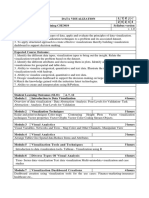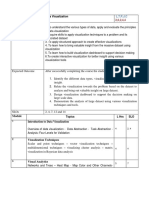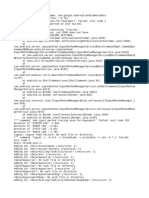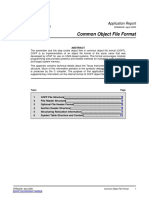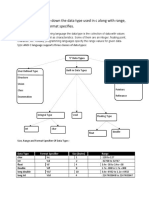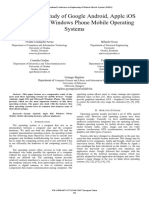0% found this document useful (0 votes)
26 views4 pages505 T3612 Data Visualization
The document outlines a course titled 'Data Visualization' for postgraduate and undergraduate students, focusing on the principles and techniques of data visualization. It covers topics such as data analysis, basic visualization principles, and advanced visualization using web technologies and programming languages. The course aims to equip students with the skills to effectively visualize data for better decision-making and includes various assessment methods.
Uploaded by
purvahk08Copyright
© © All Rights Reserved
We take content rights seriously. If you suspect this is your content, claim it here.
Available Formats
Download as PDF, TXT or read online on Scribd
0% found this document useful (0 votes)
26 views4 pages505 T3612 Data Visualization
The document outlines a course titled 'Data Visualization' for postgraduate and undergraduate students, focusing on the principles and techniques of data visualization. It covers topics such as data analysis, basic visualization principles, and advanced visualization using web technologies and programming languages. The course aims to equip students with the skills to effectively visualize data for better decision-making and includes various assessment methods.
Uploaded by
purvahk08Copyright
© © All Rights Reserved
We take content rights seriously. If you suspect this is your content, claim it here.
Available Formats
Download as PDF, TXT or read online on Scribd
/ 4








